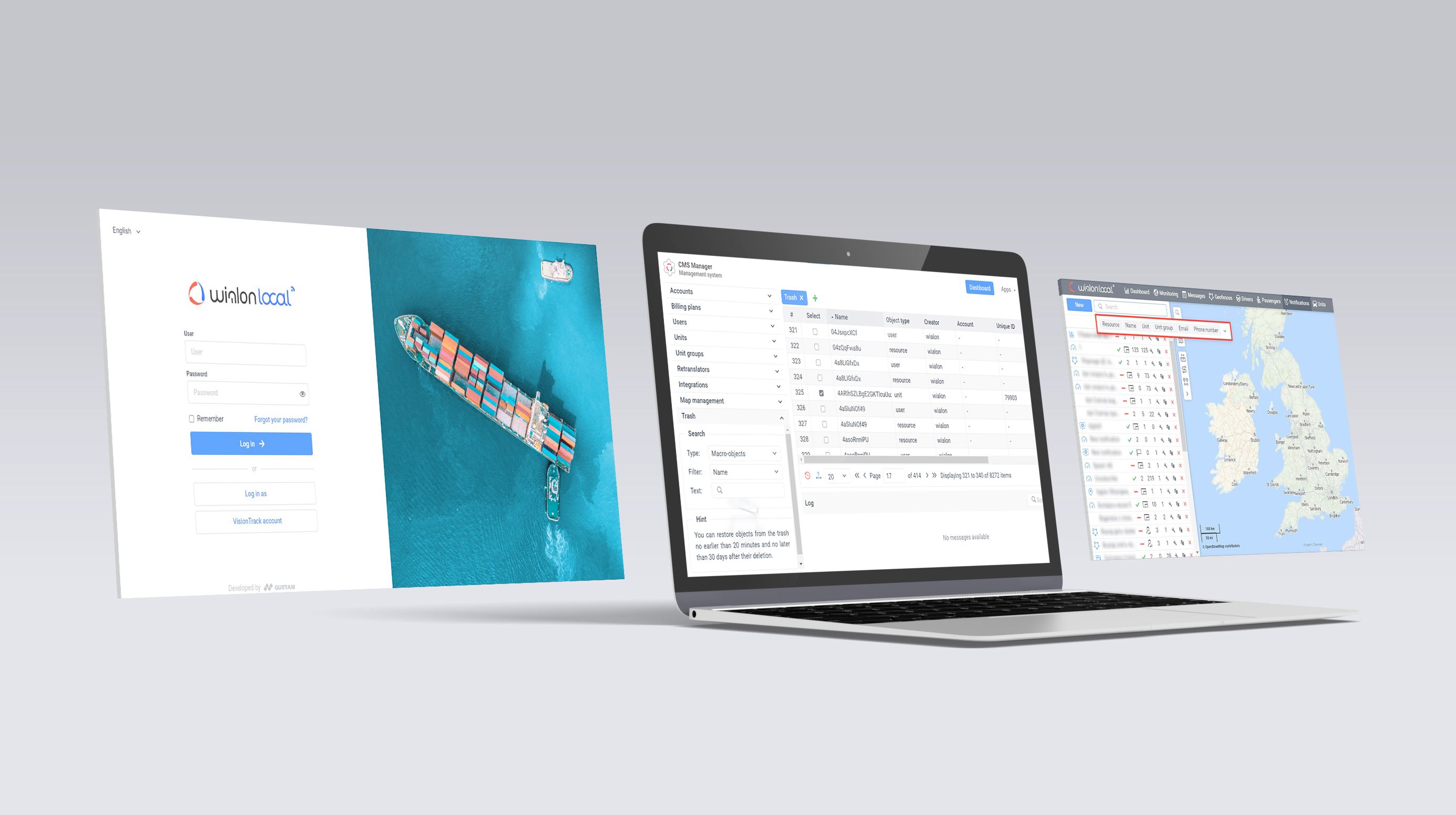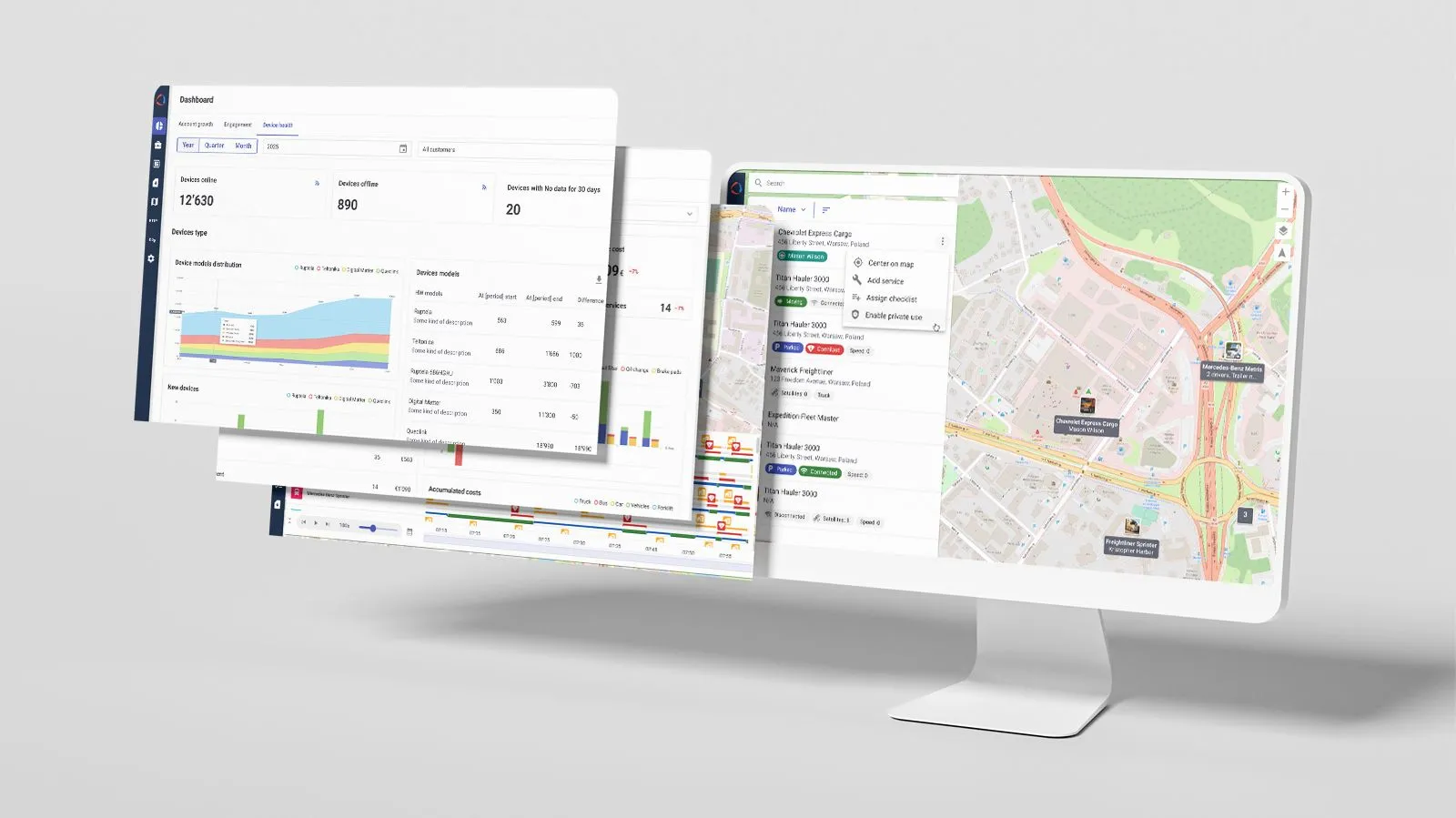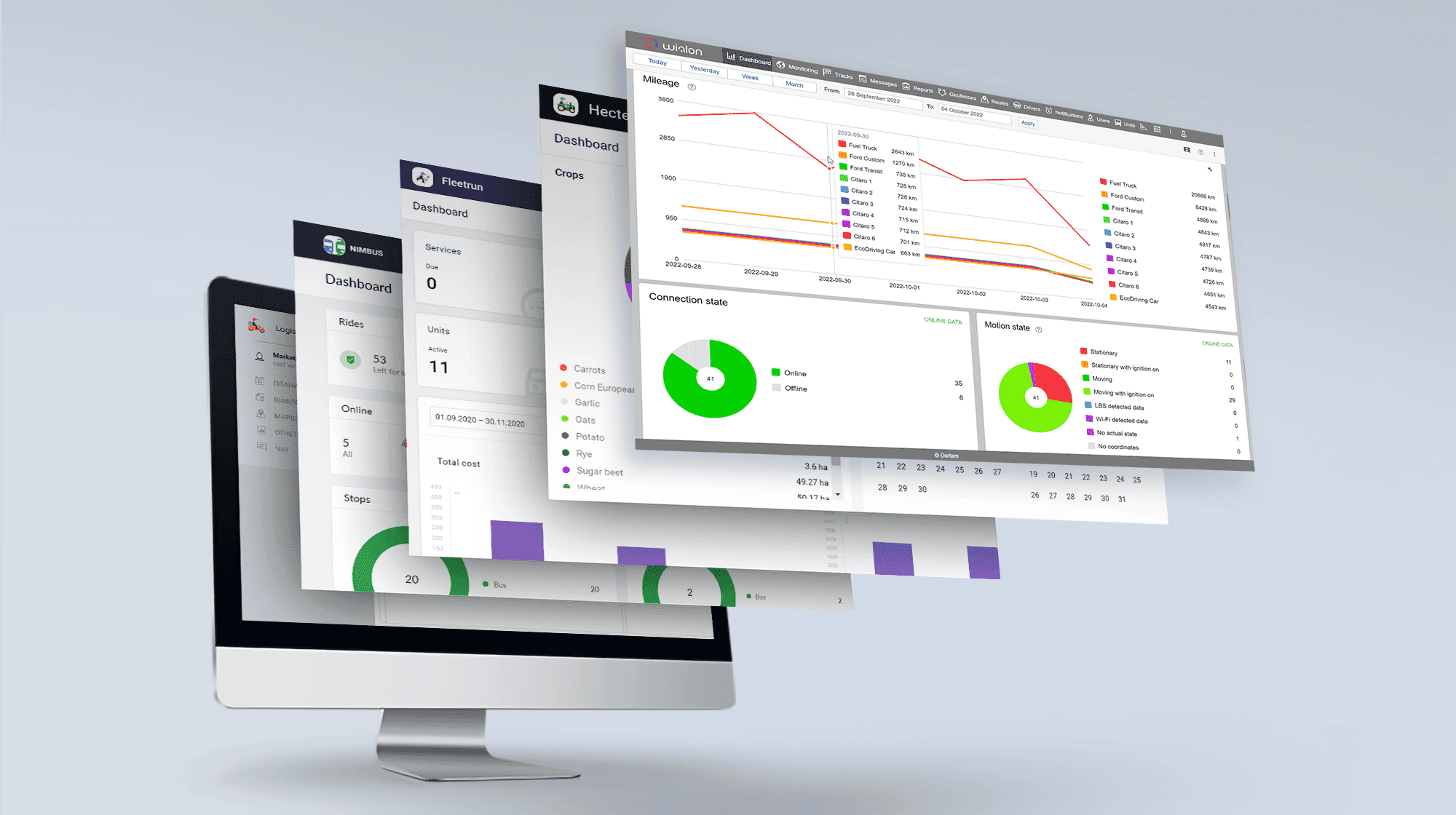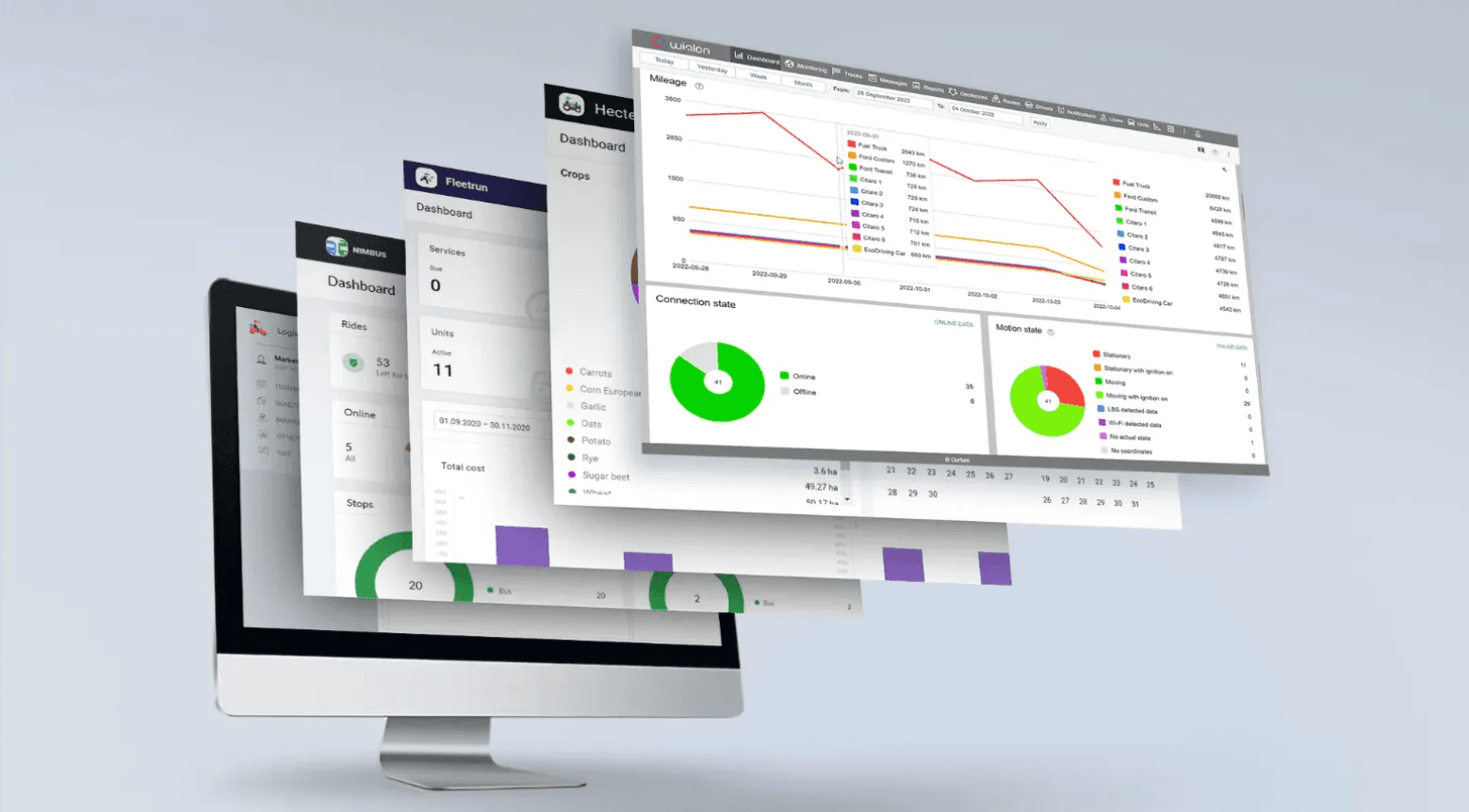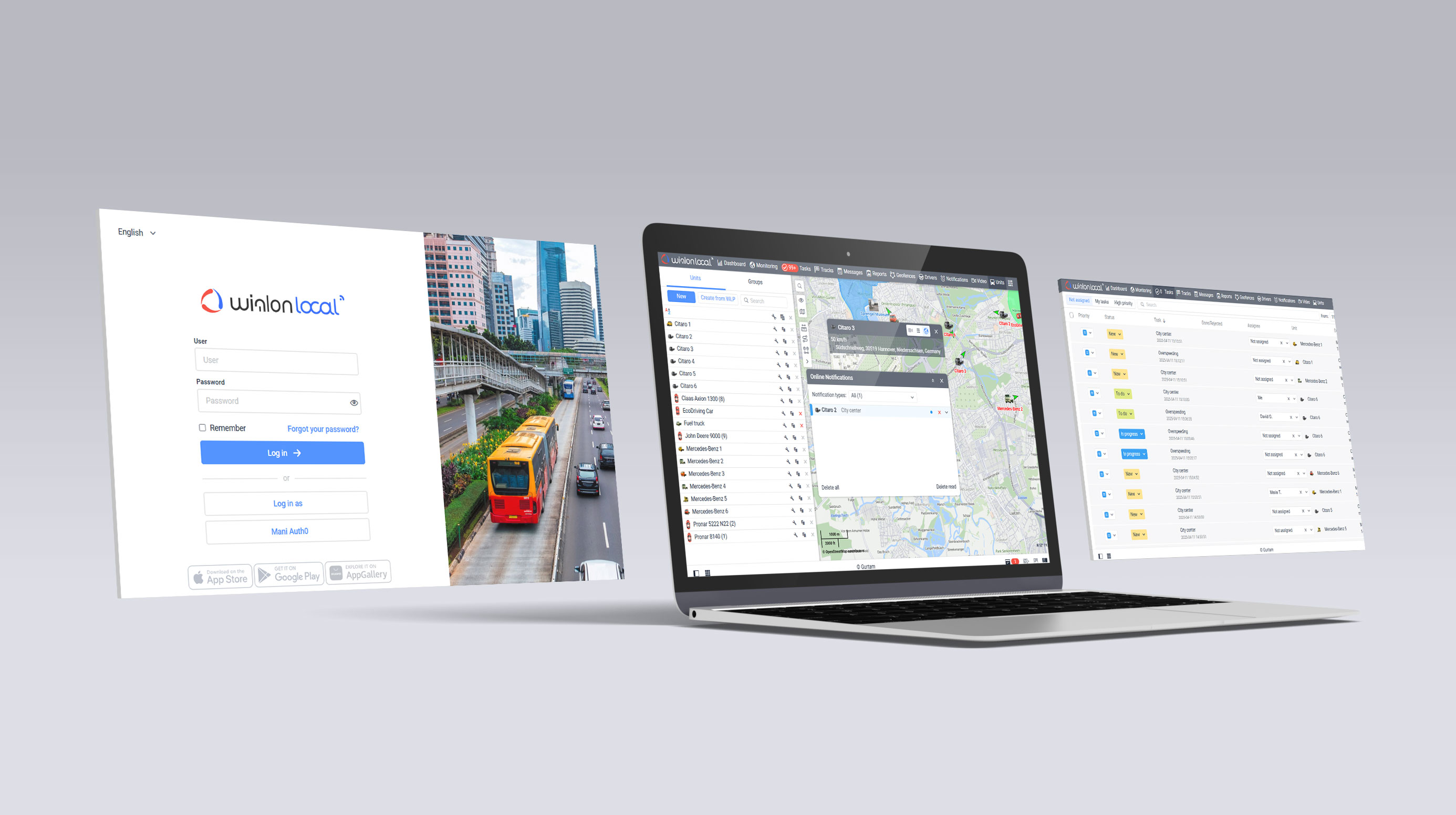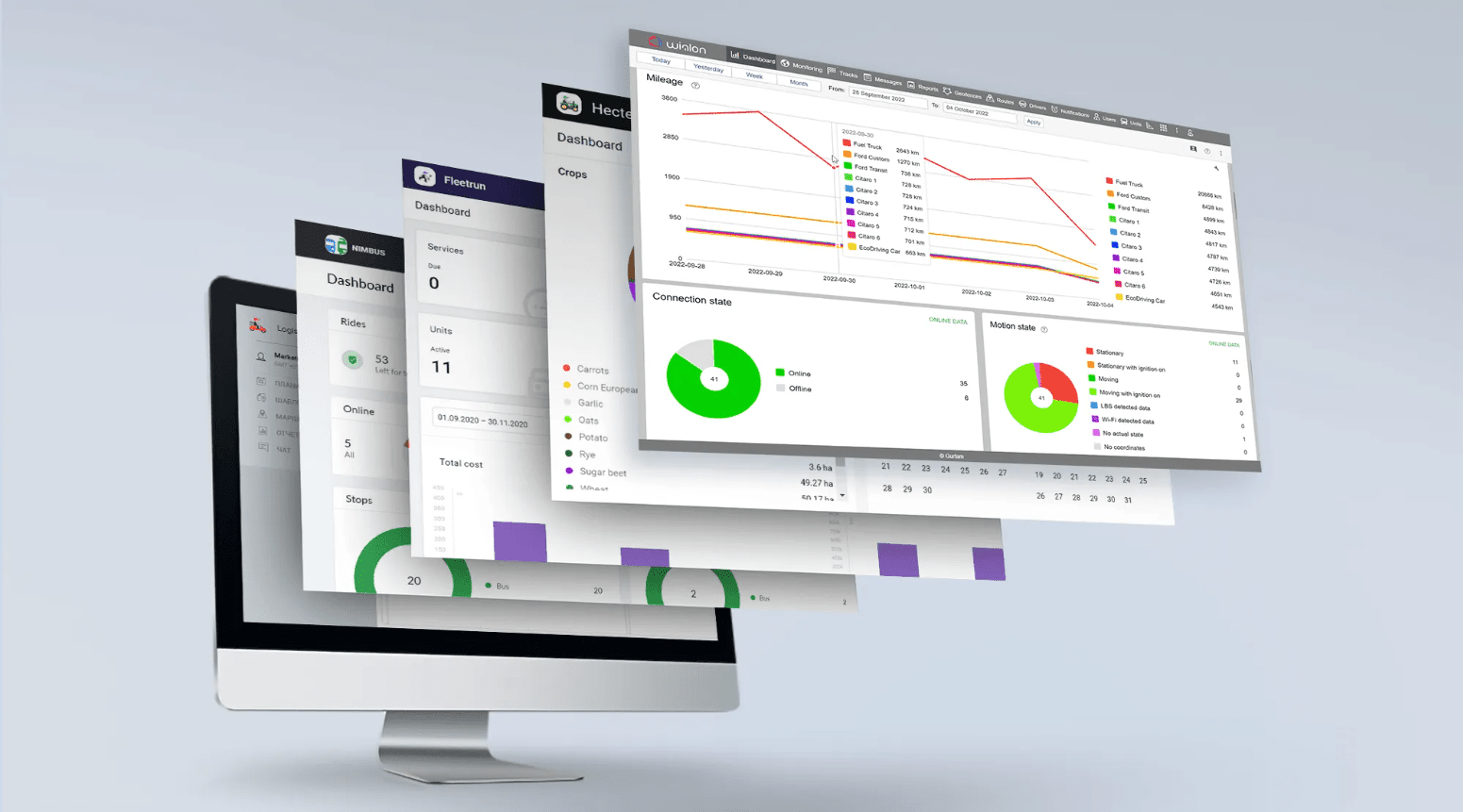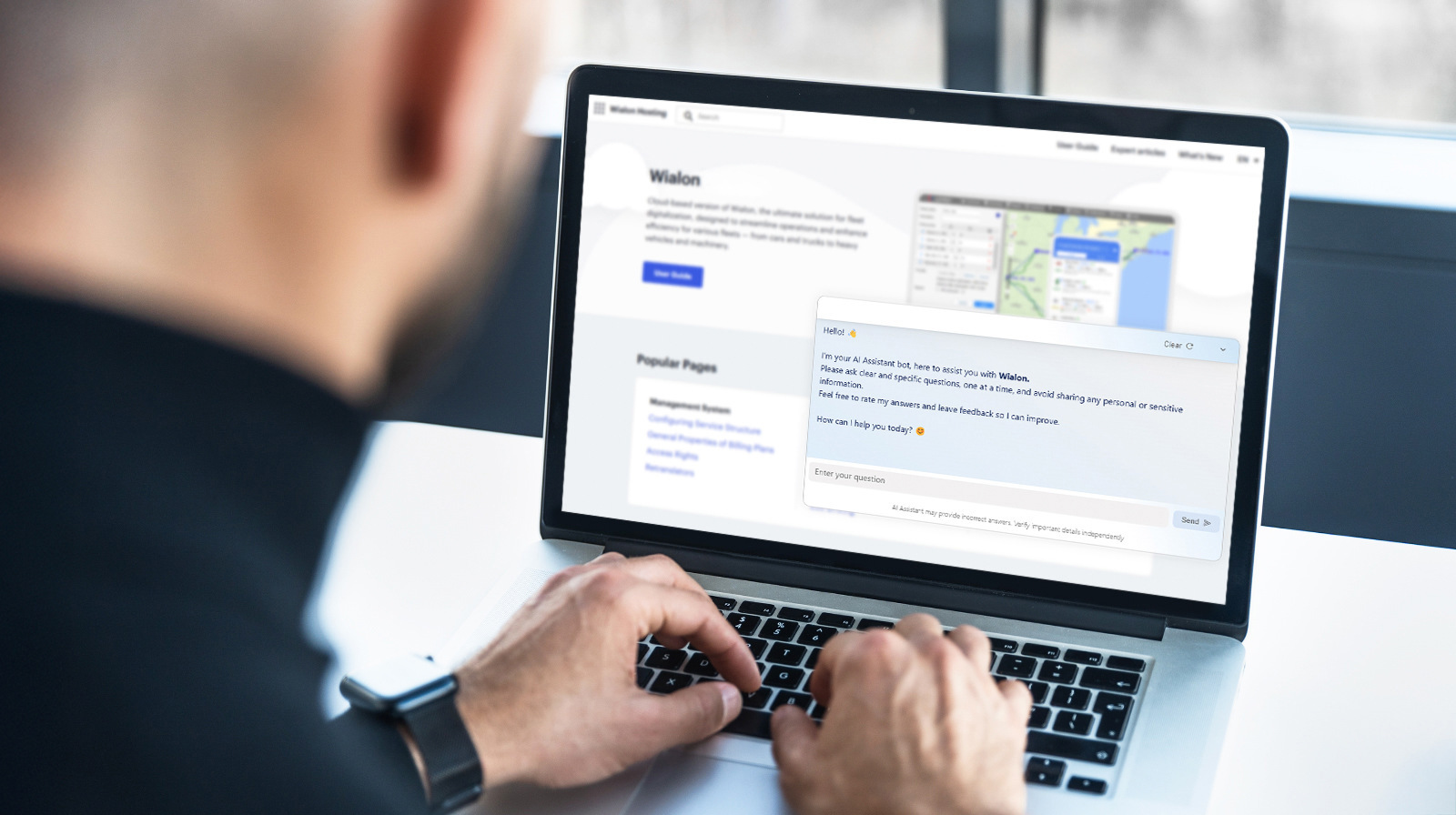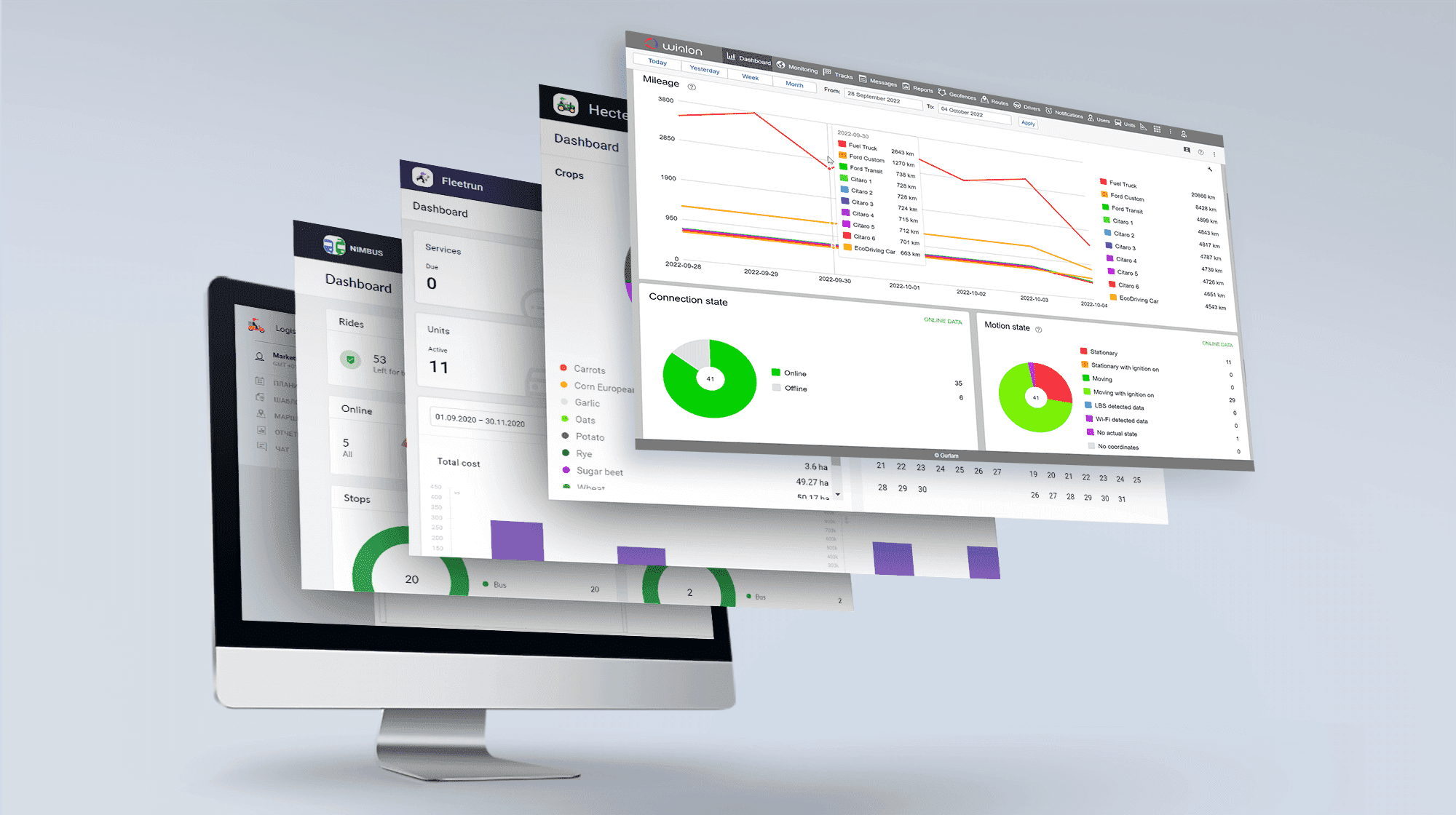Today, April 24, the updated server solution for fleet management, Wialon Local 2404, was released.
With the system update, Wialon partners can more easily find and restore deleted objects from the Trash, and users can configure sensor parameters more accurately and quickly fill out various forms thanks to improved validation logic.
As always, most of the features included in the new Wialon Local have already been implemented in Wialon Hosting within a year since the previous release of the server version of the system. This means that by updating Wialon Local, you will get functionality that has already been tested by thousands of users.
Monitoring system
Design
Redesign of the Wialon login page
All users start working with Wialon from the login page, where the first impression of the platform is formed. That’s why we did a substantial redesign of the login page to make it more modern and user-friendly.
We refreshed the color schemes, providing users with four options: Default, Light, Gray, and Classic. Navigation on the page was enhanced with the use of the Tab button. We also included a timer on the button for resending the two-factor authentication link.
Please be aware that the new login page design will be applied only after you activate the corresponding option in the Administration system. Note that these changes do not apply to personal designs.
New animation in the Wialon login page and opening tabs
When accessing the login page of the Monitoring system or within CMS or while waiting for tabs to open in Wialon, users will now see a new minimalist animation that indicates data is loading.
Refined design of the work list on the Monitoring tab
We redesigned the work list of units and unit groups on the Monitoring tab to enhance the overall user experience, making it smoother and more intuitive.
Besides, we refreshed the visual styles of the work list elements, fine-tuned the padding for certain elements, and adjusted the way unit group names are displayed.
Refined design of the work list on the Monitoring tab
Improved user interface for the Locator dialog
We made several significant changes to enhance the user interface of the Locator dialog, aiming to provide a smoother experience while working with the tool. We optimized the utilization of space within the dialog window and improved the display of unit link names and descriptions, making them more readable.
Enhanced color indication for online notifications
The online notifications, including those on the minimaps, now have better color indication. Notably, the color indicator on the notification became bigger and thus easier to see. The row’s background aligns with the indicator color but is more transparent. Furthermore, unread notifications are now marked with a plain blue dot rather than a background color.
New color indication for online notifications
Improved interface for viewing media files
We changed the interface for viewing media files, giving it a more modern look and standardizing the design across different system elements.
To enhance user experience, we also relocated key file details (the unit sending the file, date and time, and precise unit location at the time of image or video transmission) along with the button panel for interacting with the asset — now these elements are conveniently grouped in one place.
Improved interface for viewing media files
User settings
Ability to configure the fractional sensor values
In User settings in the Sensor fractions section, users now have the ability to configure how values are displayed for the Mileage, Gauges, Engine, and Fuel groups, as well as for custom sensors. Options include showing decimal fractions or rounding to receive whole-numbered sensor values. This can be applied in messages, reports, tooltips, and other sections of the system. The rounding option is particularly useful for sensors where fractional values are not essential, as it eliminates the “unnecessary” decimal component, simplifying the visual presentation of information.
Setting the fractional sensor values
Monitoring
Auto-addition of units to the work list
We introduced the automatic addition of new units to the work list, simplifying the process for users. When this option is enabled, there’s no need to take any extra steps — new units will be added to the list as soon as they appear.
This functionality is available to all users, regardless of the number of units. For users with fewer than 20 units, the feature is activated by default. Users with over 20 units need to enable auto-addition themselves — instructions on how to do it are provided in the system tooltip.
Now units will appear in the work list automatically
Sensors
Conversions in driver assignment sensors
Users can now autonomously select the conversions for calculating sensor values, eliminating the need to submit a request to change their device configuration. This feature can be particularly relevant when generating a report on a driver who manages multiple vehicles equipped with different tracker models.
Sensor parameter conversion
Adaptive median filtering
We added a new type of filtering — adaptive median filtering. Its algorithm allows you to automatically select the desired degree of filtration based on your tracker data and get more accurate fuel information.
Adaptive median filtering
Alternative speed source options
We added the ability to use alternative speed sources throughout our system.
Users got the flexibility to select a specific parameter to determine speed. This proves particularly useful when GPS speed lacks accuracy, such as in weak signal areas. Or when users working with the CAN bus want to opt for this specific source, considering it more reliable.
Please note that this option is currently not available for all types of devices. The list of these devices will expand in the future.
You can select the required speed parameter in the Unit properties
Reports
New 10-point system for rating the quality of driving
We replaced the 6-point rating system used in the Eco driving reports with a more user-friendly 10-point system. The underlying mathematical formula for converting penalty points into scores remained unchanged.
CO2 emissions data and reports
The volume of carbon dioxide emissions is a widely used parameter indicating the gas emitted by vehicles into the atmosphere. The average CO2 emissions value is now available on the Profile tab in the Unit properties. Besides, the emissions volume calculated based on the trip mileage is available in reports for the unit, unit group, driver, and driver group.
Average CO2 emissions value field in the Unit properties
False fuel fillings and drains
Users can now mark fuel fillings and drains as false events. This feature proves helpful in scenarios where the system mistakenly logs fuel fillings and drains. For instance, if a vehicle is on a slope, the fuel level sensor might detect a sudden change.
False events will be labeled on maps, charts, and tracks with a special icon, and the associated data won’t be used in calculating fuel-related metrics. This way, users will get even more precise fuel reports.
Marking of false fueling in the fuel report
Notifications
Enhanced search on the Notifications tab
We added the capability to filter the results based on multiple criteria simultaneously. It empowers users to fine-tune their search parameters and quickly find the necessary notifications.
Criteria for filtering notifications
Validation
New field validation logic for several forms
For Wialon Local 2404, we made a large-scale renovation that will improve the user experience when filling out various forms. The goal of this update is to unify the system behavior when processing errors associated with incorrect data entry.
The new validation logic was implemented for:
- the fields in the forms for creating and editing Drivers, Passengers, and Trailers, as well as their groups;
- forms for creating and editing a group of units;
- the fields in the General section of Unit properties;
- the forms in the geofence groups tab;
- the notification creation window, and a custom column in the properties of the table required for building a report template;
- custom fields in all Wialon forms.
Example of validation when editing a driver’s name
Management system
Trash
New search options in the Trash
In the Wialon Local 2404 update, we enhanced the functionality of the Trash in CMS, with a particular focus on improving the search options of deleted objects.
To refine your search in the Trash, we introduced additional columns to the table of deleted objects. You can now locate an object by the account name, ID, phone number, object type, and the person who deleted it. If an object has several phone numbers or IDs, these will be displayed in the search results, separated by commas in their respective columns.
Moreover, you can now record the reason for an object’s deletion in CMS and subsequently search for the object in the Trash by this specified reason. This update significantly broadens the data displayed, making the table more informative and streamlining the search process.
List of columns in the deleted objects table
Restoring drivers, passengers, trailers, and their assignments
Users can now independently restore deleted drivers, passengers, and trailers, along with their assignment history, without the need to request technical support. This feature comes in particularly handy when the user needs to recover lost data due to accidental deletion or the incorrect use of the Replace import type when existing data is completely removed and replaced with a new one.
Error descriptions in restoring objects
We improved the error descriptions that appear when attempting to restore a deleted object. Users will now receive more informative error messages, highlighting the cause of the restoration failure, such as if another object has an identical phone number.
Exporting data from the Trash in .xlsx format
Now, all the information from the Trash can be effortlessly exported in .xlsx format in just a few clicks. Thanks to this enhancement, Wialon partners can easily and conveniently share the data with users who don’t have access to the Trash.
Export data from the Trash in .xlsx format
Administration system
Login to Wialon Local via Visiontrack and integration with Auth0
As we know, many Wialon partners use the Visiontrack video telematics platform in their work. For these users, we streamlined the login process for both Wialon and Visiontrack systems using the Auth0 account, a reliable authentication and authorization service. This integration allows for seamless system switching without the need to re-enter passwords.
Furthermore, the Auth0 integration enables password-free logins to Wialon not only via Visiontrack but also through other third-party SSO services that you might use, including Azure, SAML, OpenID Connect, Okta, and PingFederate.
If you want to link any third-party service account to your Wialon Local account via Auth0, please contact support@wialon.com.
Detailed instructions for using the Wialon Local 2404 system are available in the Wialon user guide.
If you want to install Wialon Local 2404 or update the current version of the system, please contact your Partner Success Manager or write to sales@wialon.com.
Don’t forget to subscribe to the Wialon blog and pages on LinkedIn, Facebook, and YouTube to stay up to date with all the news.
